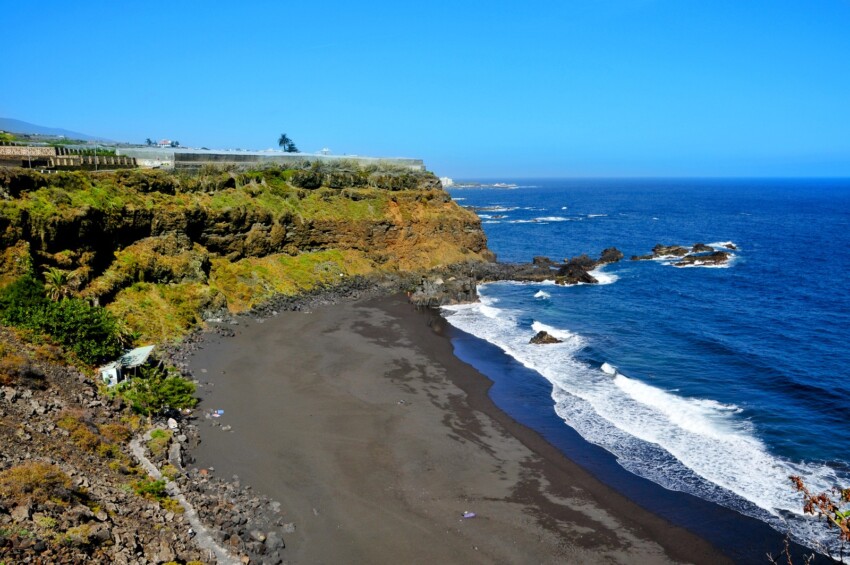

Even in winter, Spain is a sun-kissed country. Not all of it actually, because it has a huge expanse and a huge variety of landscapes including high mountains that are filled with snow, but by choosing the right places you can have a beach holiday in Spain even in the winter season.
Swimming is not always guaranteed, even in the warmer Canary Islands, but if your goal is to escape the harsh winter temperatures and enjoy some warmth without the cost and stress of a trip to exotic locations the south and islands of Spain are the ideal destination.
The heat is only a few hours’ flight away: pack your swimming costume and sun cream and say goodbye to a grey winter without a holiday. Leave your passport at home, staying in Europe is enough with your identity card; no time zone problems or long waits at the airport to change planes; plane tickets even for less than a hundred euros thanks to the convenient low-cost offers. The golden shores of the Costa del Sol, the volcanic islands of the Canary Islands, the city beaches of Alicante and the azure waters of the Balearic Islands await you.
Our mini-guide to the Spanish winter sea in Spain takes you to the right places to put on a t-shirt and let the sun caress your skin. Even in January.
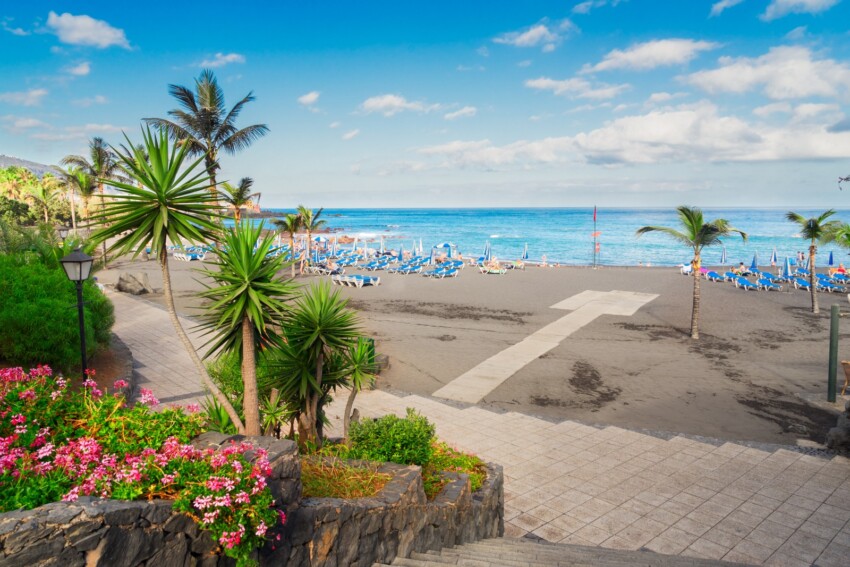
For a winter beach holiday without going too far away, the Canary Islands are the best: they are located at the same latitude as the Saharan Desert, just north of the Tropic of Cancer, and enjoy sunshine and nice temperatures all year round (average 25° in December, January and February), but it only takes 4-5 hours by plane to get there. Another reason to choose the Canaries over other destinations is that there is a good choice of low-cost flights in all seasons, with departures from different cities.
The Canarian archipelago consists of seven islands, all of volcanic origin but very different from each other.
Tenerife is the most populated and most visited island of the Canaries. You will find hotels to suit all budgets, plenty of shops, bars and restaurants and all the services you need. It is an island with a varied landscape and rich cultural heritage, allowing you to combine lazy afternoons on the beach with forest hikes, mountain treks, shopping sessions and museum visits. It is also the most recommended for those who love nightlife.
The island’s capital, Santa Cruz, is cosmopolitan and highly urbanised but not without charm. The beach resorts are concentrated along the south coast. Of all of them, Playa de las Americas and Los Cristianos are the most fashionable; if you are looking for something quieter, head east to the neighbouring resorts of Puerto de Santiago, Playa de la Arena and Los Gigantes. In the northwest of the island, Puerto de la Cruz is the main resort.
Don’t venture in winter to Pico del Teide, the highest mountain in Spain: it may be covered in snow, but if you’re looking for that other destination will do more for you.
The archipelago’s second most visited island, Gran Canaria offers the same amount of amenities as Tenerife. The landscape is even more varied: a green and fertile north contrasts with an arid and desert south; the hinterland is predominantly mountainous.
The most important city is Las Palmas, a typical Spanish city enlivened by a multi-ethnic population, perfect for those who want to combine seaside and cultural visits.
Popular beach resorts are Maspalomas, Playa del Inglés and Puerto Rico; for something quieter, head for Santa María de Guía or Puerto de las Nieves.
The second largest island of the archipelago is one of the least populated. Fuerteventura has vast desert areas inland that are criss-crossed by scenic hiking trails, making it a paradise for walkers.
The western and northern coasts are rocky, with a few beaches that open up between imposing cliffs, while to the east and south the beaches are long stretches of white sand: they are the widest of all the Canaries.
Resorts are concentrated in the area of Morro Jable (south) and Caleta de Fuste (east), but the two prettiest towns on the island are Corralejo and El Cotillo.
Very conscious of preserving its rich natural heritage, Lanzarote has been declared a Biosphere Reserve and is an enchanting island to visit for nature lovers. The beaches are enchanting, but compete with more than 300 volcanic cones, moonscapes and lush palm groves.
The beaches are all along the east coast; the most famous locations are Arrecife, Playa Blanca and Puerto del Carmen.
The islands of La Palma, Gomera and El Hierro are more difficult to reach and are therefore the least visited by international tourists. There are no direct international flights, so you must first arrive on one of the main islands and then take a ferry.
The range of accommodation and tourist services is far less than on the more visited islands so a holiday here requires more planning, but these three little gems are ideal for those who dream of a holiday immersed in nature or who hate the hustle and bustle.
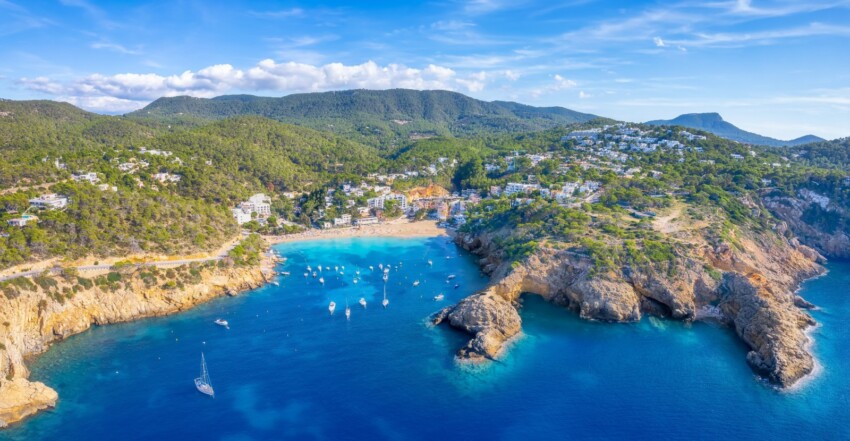
While the Canary Islands enjoy a continental climate, the Balearic Islands have a typically Mediterranean climate, with lower average temperatures but still warm enough to enjoy relaxing hours in the sun.
Travelling to the Balearic Islands in winter, the low season for tourism, entails some inconveniences (fewer flights on offer, some large resorts closed for holidays…) but also many advantages: lower prices and no crowds.
Mallorca, the largest island, is best suited for a winter holiday because in addition to beautiful beaches you can visit charming towns and villages plus a couple of other unmissable attractions suitable for any season such as the Majorica pearl factory and the Dragon caves.
Winter is also the best season to visit Ibiza if you are not interested in the transgressive nightlife for which this island is so famous. You will have the natural beauty and charming atmosphere of rural Ibiza all to yourself.
Less recommended instead are the islands of Menorca and Formentera, although wonderful: in winter the ferries are less frequent and the islands are difficult to reach. However, if you have plenty of time, give them a thought.
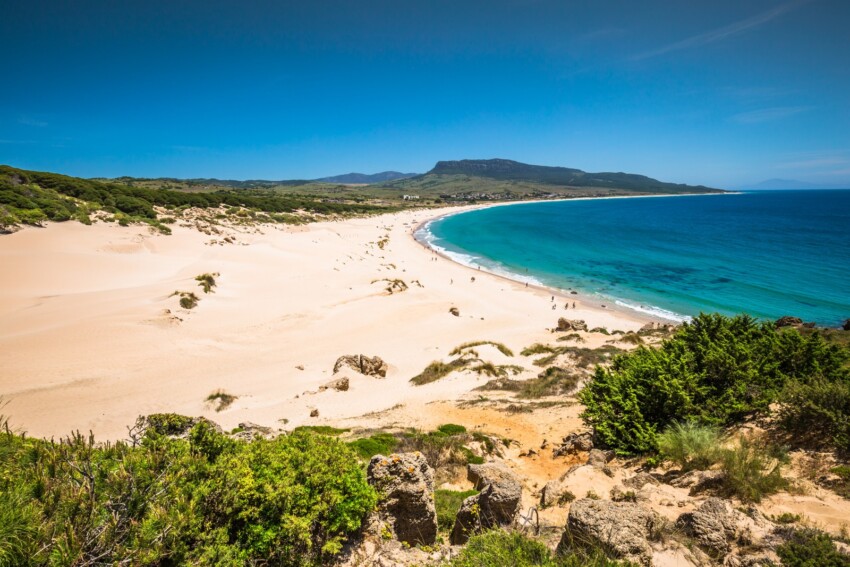
The southernmost region of Spain is an ideal destination to experience all things typically Spanish: tapas, flamenco, bullfighting and, of course, beaches!
A winter holiday in Andalusia is perfect for combining relaxation on the beach with visits to the magnificent cities of Seville, Cordoba and Granada without the scorching heat and exhausting queues at the ticket offices of the most famous attractions. Swimming is unfortunately not guaranteed, but in the coastal cities you can easily do without jackets and scarves.
Malaga is perhaps the best city to go to in Andalusia in winter: the city beaches are pretty, perfect for a little relaxation, and the centre is full of attractions that will keep you busy for the rest of the day. From here you can easily travel to all the main resorts on the Costa del Sol including Marbella and Torremolinos.
The beaches on the Costa del Sol have the most facilities and the most hotels; the beaches on the Costa de la Luz (from Tarifa westwards) have a wilder feel and are very atmospheric, but bear in mind that they are washed by the Atlantic Ocean rather than the Mediterranean Sea: winds and currents are much stronger.
If you like solitary places, head for the Costa Tropical (province of Granada) or the Costa de Almería. Less well-known, they are very quiet in summer and even quieter in winter: a paradise for those who love unspoilt nature, not recommended for those who suffer from loneliness. In these two areas, the amount of accommodation that remains open during the winter months is less than on the Costa del Sol, so it is advisable to book in advance.
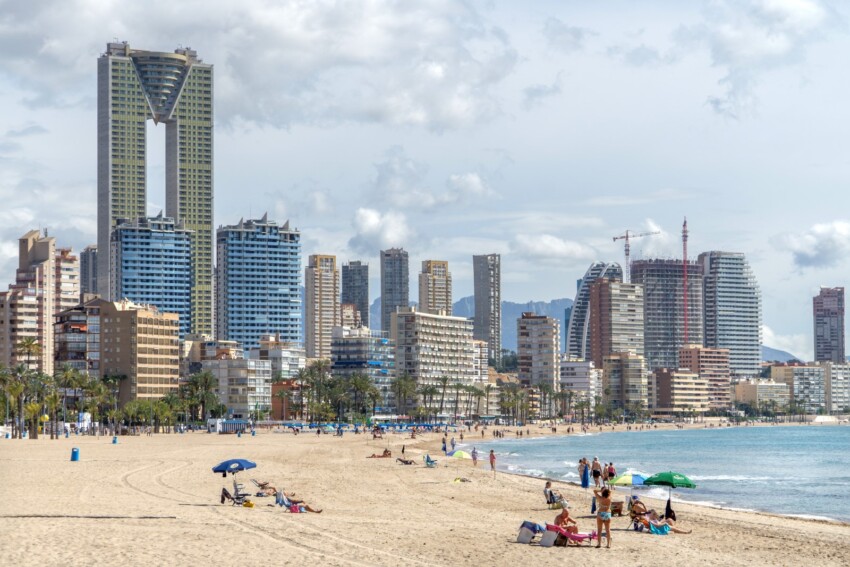
The Costa Blanca resorts in south-eastern Spain also enjoy mild temperatures and many sunny days – another destination to consider.
Alicante is a fantastic city for a winter city break: unseen snow and fog, very rare rainfall and temperatures that, with a bit of luck, can even reach 20°. Playa del Postiguet and the city’s other beaches are perfect for long walks in all seasons, while for splendid views of the coast you can climb up to Santa Barbara Castle, perched atop a rocky promontory overlooking the sea. Relaxation and leisure can be combined with interesting cultural visits and excursions in the surrounding area.
Other places not to be missed on the Costa Blanca are: Benidorm, the entertainment capital; Dénia, the city of the delicious red shrimp; Torrevieja, a charming town nestled between the sea and two saltwater lagoons; Elche, the city with the most palm trees in Europe.